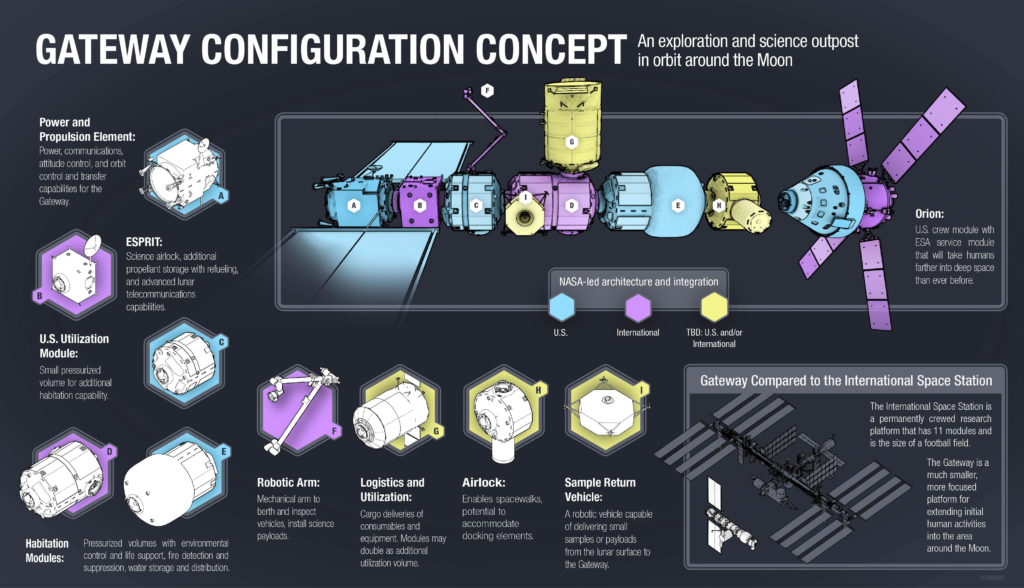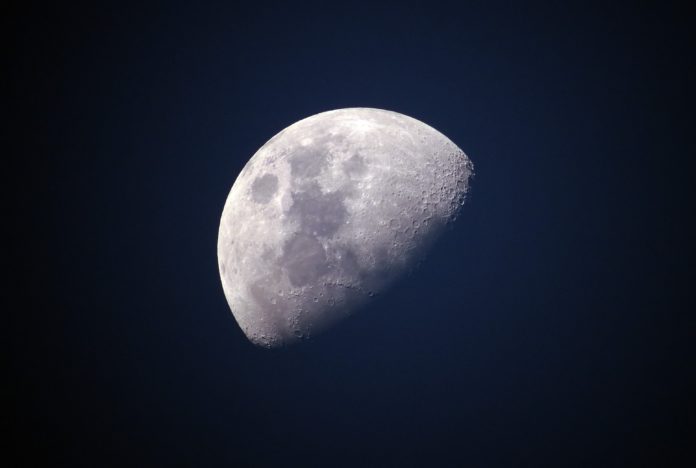Canada will be lending not just a hand, but an entire robotic arm, to NASA’s Lunar Gateway project, as revealed in a recent announcement from Prime Minister Justin Trudeau.
Reinforcing Canada’s long-standing position as a world-leader in space technology, the Canadian government has committed $2.05 billion over 24 years toward the Canadian space program, and an additional $150 million over five years toward the Lunar Gateway project.
According to Trudeau, this investment will create hundreds of jobs for Canadians as well as contributing $100 million annually to the country’s gross domestic product.
“We are stepping up,” Trudeau said during the announcement. “Canada is going to the Moon.”
A Gateway from the Moon to Mars
The Lunar Gateway is the first step in NASA’s ongoing Moon to Mars plan. At one-fifth the size of the International Space Station, or ISS — the current home of Canadian astronaut David Saint-Jacques — the Lunar Gateway space station will orbit the Moon, acting as a science laboratory and rendezvous location for future exploration of the lunar surface.
It will also eventually serve as a stepping stone for human-led voyages on the path to Mars.
At roughly the same size as a typical studio apartment, however, the Gateway won’t be continuously inhabited like the ISS. Instead, astronauts will live and work aboard the Gateway for up to three months at a time, conducting experiments both in the station and on the lunar surface down below.
Their goals range from learning more about the Moon to studying the long-term health effects of cosmic radiation and and solar storms on astronauts living outside the Earth. The research that will be conducted on the Gateway will directly inform future missions to Mars or beyond.

Continuing a Canadian tradition of space robotics
Canada has long been a leader in the field of space robotics. Perhaps the most well-known technical achievement in the country, the original Canadian robotic arm — or Canadarm — marked the beginning of Canada’s collaboration with NASA, and spent 30 years aboard the Space Shuttle Columbia.
Today, the Canadarm 2 is an invaluable components of the ISS. It was a crucial part of the space station’s assembly, and currently performs ongoing station maintenance. Its impact on Canada’s scientific and technical sectors is so significant that it was even featured on the $5 bill.
It’s perhaps no surprise, then, that Canada’s main contribution to the Lunar Gateway will be what Trudeau referred to during the announcement as “Canadarm 3”: a smart robotic system that will include a next-generation robotic arm along with a suite of specialized equipment and tools.
Since the station won’t be continuously inhabited by astronauts, this smart robotic system will be crucial in the upkeep and maintenance of the station during the time when no crew is present. It will also likely contribute to the construction of the Lunar Gateway station.
Canada is inviting you to dream big
Canada’s involvement in the Lunar Gateway secures the country’s place as a future leader in space technology, science, and exploration.
“Today’s announcement is a clear message to the next generation of Canadian explorers, future geologists, engineers, and astronauts,” said Saint-Jacques from aboard the ISS during the project announcement. “Canada is inviting you to dream big.”
Construction on the Lunar Gateway is scheduled to begin in 2022, with science operations beginning as early as 2026.








































